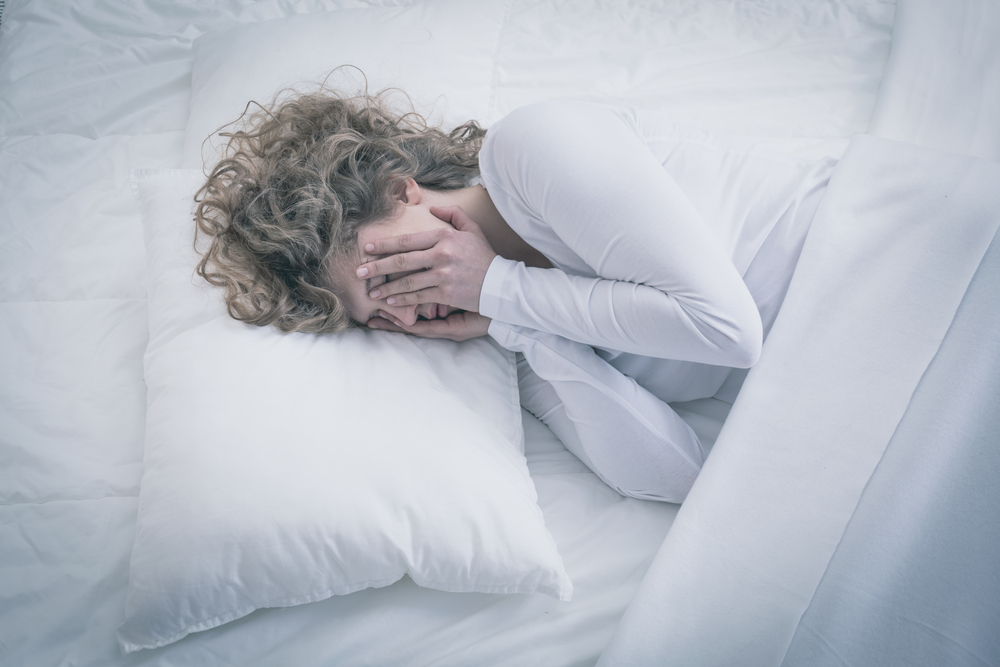Sleep Disturbances in Early Parkinson’s Increase Over Time, Study Finds

The number of people with early-stage Parkinson’s disease who reported sleep disturbances increased over the course of a five-year longitudinal study, with insomnia being the most common sleep problem among this patient population.
The frequency of other sleep problems such as excessive daytime sleepiness and rapid eye movement (REM) sleep behavior disorder increased as well.
The study, “Progression of sleep disturbances in Parkinson’s disease: a 5-year longitudinal study,” was published in the Journal of Neurology.
Sleep disturbances are common in the early stages of Parkinson’s disease, and include insomnia, excessive daytime sleepiness, and REM sleep behavior disorder — a condition in which people act out their dreams, resulting in mild to violent limb movements and talking.
However, the long-term evaluation of sleep disturbances in the early stages of Parkinson’s has not been fully explored.
To fill this gap, researchers based at Newcastle University in the United Kingdom examined the frequency of sleep disturbances over five years in a large group of people with Parkinson’s disease who had yet to be treated (treatment-naïve).
“The long duration of follow-up will help better understand the emergence and the relationship of the various sleep disturbances in early [Parkinson’s disease],” the researchers wrote.
Patients were identified from the Parkinson’s Progression Markers (PPMI) Initiative database (NCT01141023), an ongoing multicentre observational clinical study of early Parkinson’s patients to identify clinical, imaging, and biological markers of disease progression.
The new study included 150 men and 68 women with Parkinson’s between the ages of 33 and 84 years who were assessed at the beginning of the study (baseline) and had five years of follow-up. Almost all of these 218 patients also completed assessments at two, three, and four years of follow-up.
The average disease duration at the beginning of the study was about seven months. A total of 102 control subjects were included as a comparison.
Insomnia was evaluated using part of the Movement Disorders Society-Unified Parkinson’s Disease Rating Scale, excessive daytime sleepiness (EDS) was measured with the Epworth Sleepiness Scale, and REM sleep behavior disorder (RBD) was assessed using the REM Sleep Behavior Disorder Screening Questionnaire.
Of note, proper sleep studies were not performed to confirm sleep behavior disorder, and, as such, the authors used the term probable RBD or pRBD. Furthermore, healthy controls who were positive for RBD were excluded from this study as RBD is strongly associated with future neurodegeneration.
At baseline, 16 (7.3%) of the patients used medications for sleep, which increased to 41 (18.8%) after five years. In contrast, nine (8.9%) control subjects used medications for sleep at baseline, which increased to 12 (11.8%) after five years.
Over the five-year follow-up, insomnia was the most common sleep problem reported by Parkinson’s patients, followed by pRBD, and excessive daytime sleepiness.
No significant difference in insomnia was observed at baseline or the two-year follow-up in patients, compared to controls. However, significantly more patients reported insomnia compared to controls at years three, four, and five. At baseline, 45 (20.6%) of patients reported insomnia, which increased to 97 (44.5%) at five years.
Similarly, there was no difference in EDS between patients and controls at baseline, but a significantly higher proportion of patients reported EDS at all other points than controls. EDS increased from 37 patients (17%) at baseline to 70 (32.1%) at five years.
In comparison, insomnia and EDS did not change significantly over time in healthy controls.
A total of 46 (21.1%) Parkinson’s patients reported pRBD at baseline compared to 68 (31.2%) at five years.
The percentage of patients reporting multiple sleep disturbances increased over time, but this was not the case for control subjects.
The number of patients who did not report any sleep disturbances decreased from 121 (55.5%) at the beginning of the study to 66 (30.3%) after five years. At baseline, 28 (12.8%) reported insomnia only, which increased to 42 (19%) after five years.
Two coexisting sleep disturbances were reported by 25 (11.5%) patients, which increased to 51 (23.4%) at five years.
Three patients (1.4%) said they had all three types of sleep problems at the beginning of the study compared to 16 patients (7.3%) at five years.
Significantly more Parkinson’s patients with sleep disturbances had a higher median levodopa equivalent daily dose — the combined total of Parkinson’s medications — compared to subjects who reported no sleep disturbances (600 mg vs. 455 mg).
Although the frequency of the different types of sleep disturbances progressively increased in Parkinson’s patients, the team noted that “there was only a small increase in the proportion of patients taking sleep medications at 5-year follow-up” compared to the beginning of the study.
“Although it is possible that not all sleep complaints are severe enough to require medical therapy, our findings indicate that a large number of patients with [Parkinson’s disease] do not receive the appropriate clinical attention for their sleep disorder,” they wrote.






